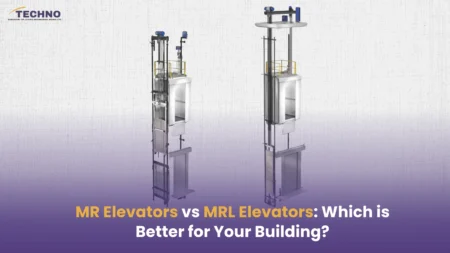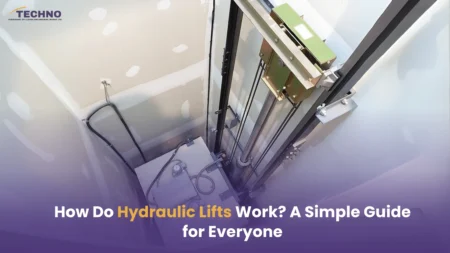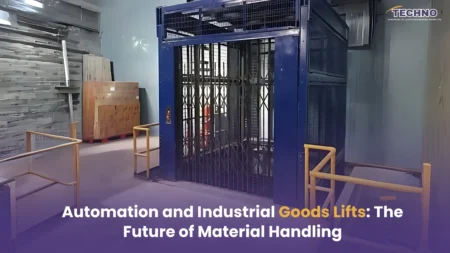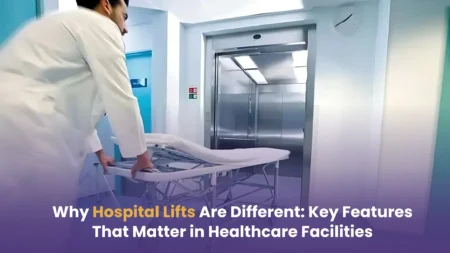Hospital wards can hardly be described as slow. A second here can mean losing a life; it means efficiency is that invisible glue that holds the whole setup together. Between all those high-tech equipment and those skilled hands, there remains an unsung hero of sorts, who quietly contributes in keeping the whole system afloat: the elevator.
But these are not ordinary lifts and elevators-these are built with the specific challenges in healthcare environments in mind. Let’s take a journey through how modern elevator systems transform hospital efficiency and deliver a tangible difference in the delivery of patient care, mobility of staff, and operational logistics.
The Major Role Elevators Serve in Hospitals
1. Speed: Every Second Matters
Consider how the sense of urgency to move a patient from the emergency room to the operating theater is increased. Waiting is not a choice. The modern elevator of a hospital, running on the efficient lift motor, makes for fast, smooth floor-to-floor movement.
Compared to a normal passenger lift, these specialized systems prioritize speed without compromising on safety. Their advanced scheduling systems can assign priority rides for emergency cases, and precious time is not lost waiting for an available elevator.
In a world where “seconds save lives,” these fast and responsive lifts and elevators are truly indispensable.
2. Safety and Hygiene: At the Top
Hospitals require more than just function; they need to achieve unparalleled safety and hygiene standards. Modern hydraulic lifts deployed in healthcare settings come equipped with features such as antimicrobial surface coatings, touchless controls, and sealed designs to minimize the risks of contamination.
Besides, sophisticated safety features, such as emergency braking systems and earthquake-resistant technology, ensure security for patients and staffs in trying times. Beyond being a means of movement, a hospital elevator can be considered a haven for safety, navigating the twists and turns of a medical setting.
3. Accessibility to All
Accessibility is not a choice when it comes to elevators in a hospital—it’s a must. In terms of design, these lifts are meant to handle anyone, from stretcher-carried patients to people who use wheelchairs, and even visitors carrying their equipment.
The wider cabin elevators, ergonomic controls, and smooth hydraulic lift ensure that no one gets left behind. For staff members, the easy transfer of bulky medical devices across floors is streamlined, minimizing labor and delays.
In essence, these elevators and lifts embody inclusivity, a critical pillar of any modern healthcare facility.
4. Reliability: The Heartbeat of Efficiency
Hospitals run 24/7, and their elevators must too. Any downtime can disrupt operations, causing delays in patient care or logistical bottlenecks. Advanced lift motors in modern systems are engineered for durability, ensuring seamless operation around the clock.
In addition, predictive maintenance technologies monitor the health of these systems in real-time, addressing potential issues before they lead to breakdowns. Whether it’s a passenger lift carrying visitors or a specialized hospital elevator moving critical supplies, reliability is non-negotiable.
5. Optimizing Space with Modern Designs
Hospitals often face space constraints, and traditional elevators can sometimes feel intrusive. The hydraulic lift is a compact yet powerful solution. These systems use minimal space while delivering maximum efficiency, making them perfect for retrofitting older hospital buildings or optimizing new ones.
Hydraulic lifts are also known for their quiet operation, ensuring that patients resting on upper floors aren’t disturbed by unnecessary noise.
6. Coordinated Operations Across Floors
Hospitals are intricate ecosystems where different floors often serve distinct purposes—ICUs, radiology labs, operating rooms, and more. Modern elevators and lifts help streamline coordination across these spaces by managing foot traffic effectively.
Some hospital elevators are programmed with intelligent routing, grouping passengers based on their destination floors to minimize travel time. This not only enhances efficiency but also reduces congestion in busy hospital corridors.
7. Energy Efficiency: A Step Toward Sustainability
Hospitals are among the most energy-intensive buildings, and every effort to reduce their carbon footprint matters. The modern lift motor and energy-efficient technologies in hospital elevators make a significant impact by consuming less power.
Some systems even use regenerative braking, converting unused energy into electricity that can be fed back into the grid. Sustainable elevators and lifts don’t just cut costs—they reflect a hospital’s commitment to environmental responsibility.
8. Elevating Patient Experience
While efficiency is the priority, the patient experience cannot be ignored. Imagine being transported in a poorly lit, noisy lift versus a hospital elevator with calming interiors, smooth operation, and even soft music to ease anxiety.
Every detail matters, especially for patients in vulnerable conditions. Elevators that offer a seamless, comfortable ride can make all the difference in creating a supportive and healing environment.
9. Technology-Driven Excellence
The integration of smart technologies is revolutionizing the way hospitals operate. Modern elevators are now utilizing technology to provide a seamless experience, from touchless panels to app-based summoning systems.
Some Hospital Elevators can also communicate with hospital management systems to enable the staff to summon an elevator from their own devices or prioritize certain floors when medical needs are time-sensitive. Such a technological approach is accurate and time-saving in a place where precision and speed matter.
Conclusion: Lifting Hospitals to New Heights
While hospital elevators don’t always make headlines, the importance of their role in improving efficiency, safety, and accessibility cannot be overlooked. An advanced lift motor for reliable performance, a hydraulic lift for saving space and energy, and many more systems form the unsung heroes of modern healthcare facilities.
It’s an upgraded world where every second matters and every detail counts; investing in state-of-the-art lifts and elevators means more than just an upgrade—it’s a commitment to excellence. Optimizing mobility, streamlining operations, and improving patient care, elevators take hospitals to a new height of efficiency and innovation.
So the next time you get into a hospital elevator, take a moment to appreciate its quiet, tireless contribution to saving lives and supporting care. Even heroes need a little recognition.












